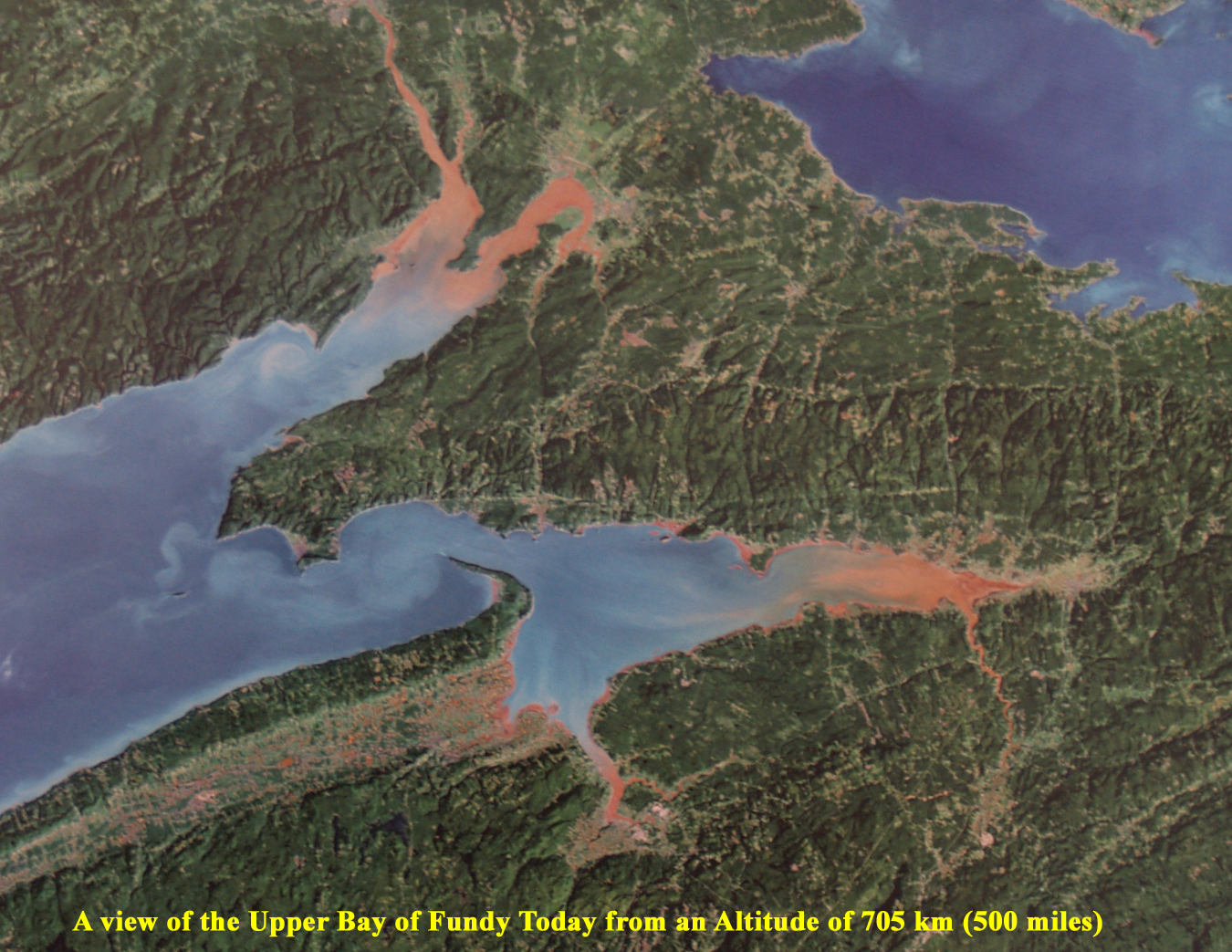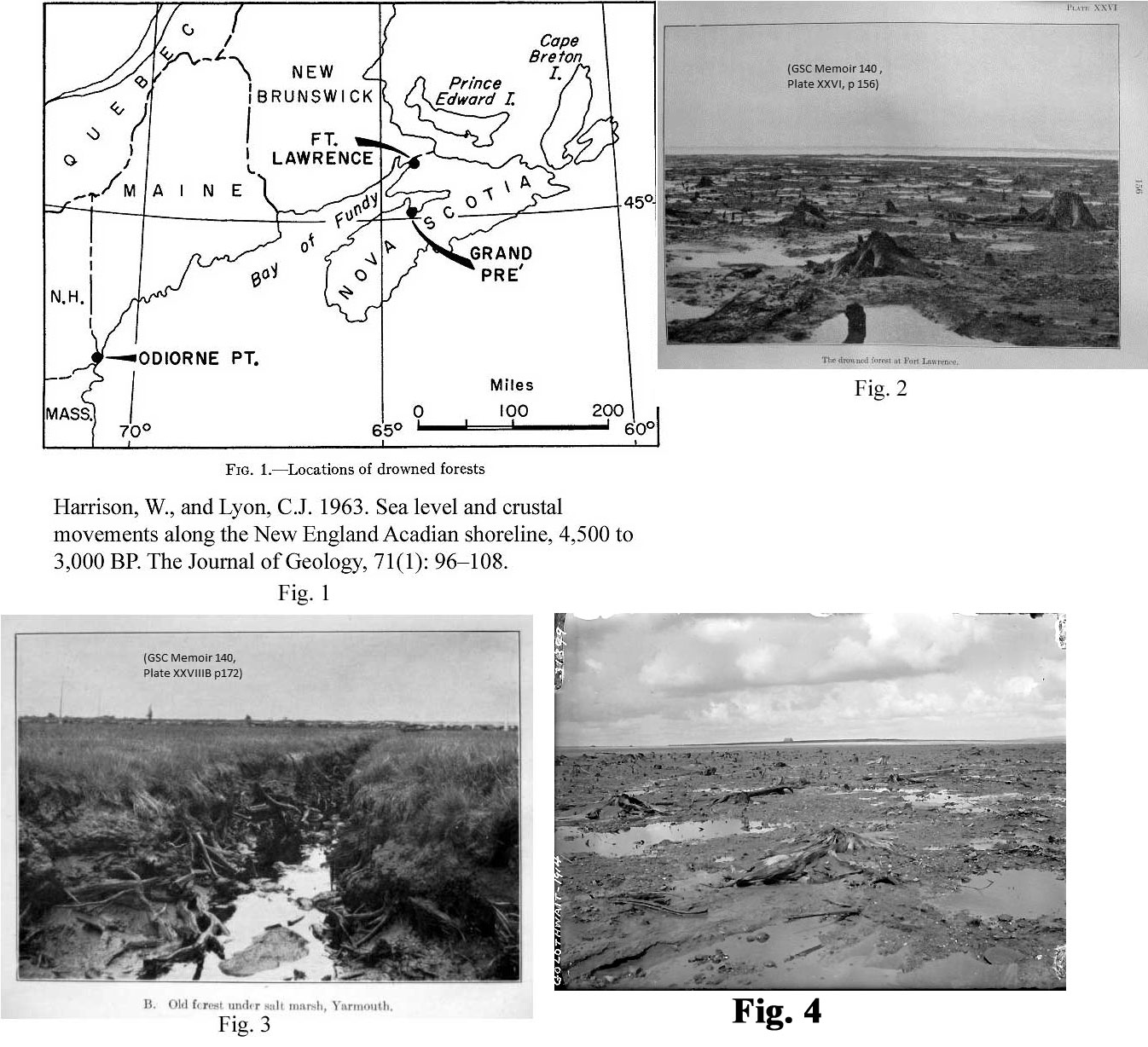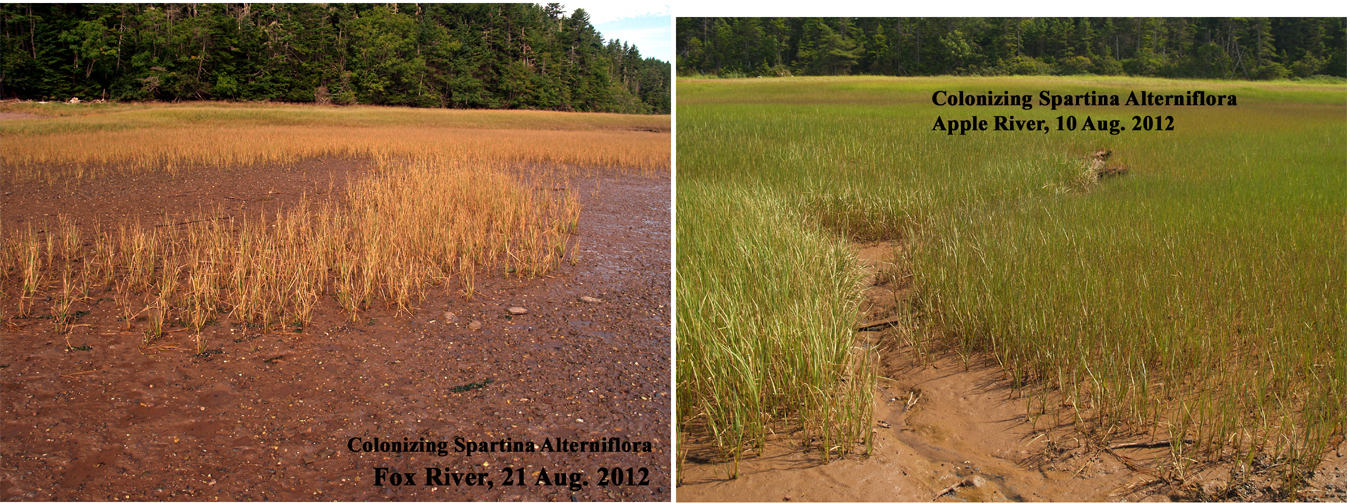


Formation of the Spartina Salt Marshes of the Upper Bay of Fundy
1)A supply of fine grained silt carried by tidal activity:
During the approximate period 8,600 years B.P. To 6,300 years B.P. The Minas Basin was non-tidal and sedimenation occured predominantly in the deeper
parts of the embayment. From 6300 years B.P. to the present tidal activity has been incresing lineraly; the present tidal activity is the most energetic
condition to have occured in the system. During this period deposition was progressively more predominent in the marginal regions, developing the sandflats,
mudflats and salt marshes visible today. The progressive inundation of the Minas Basin margins is a function of an increase in tidal range (50%) and a rise in
apparent mean sea-level (50%). (Amos 1978, p. 965)...material (18m to 37m in thickness) overlies a dissected Triassic bedrock surface (Amos 1978, p. 966).
2) The birth of a salt marsh:
A salt marsh is "born" by the arrival of a seed or the rafting of a plant of the cord grass Spartina alterniflora. The grass
spreads asexually by means of a subterranean rhizome system. The grass becomes dense and forms a baffle, which encourages the deposition of fine particulate
sediment, including organic matter (salt marsh peat). This, in effect, causes a rise of the sediment surface and makes the habitat more terrestrial. As this
happens, other somewhat less salt-tolerant grasses are able to invade. Eventually, this series of invasions and takeovers leads to a vertical zonation of grasses
and a spread of the entire marsh system. (http://life.bio.sunysb.edu/marinebio/spartina.html)
